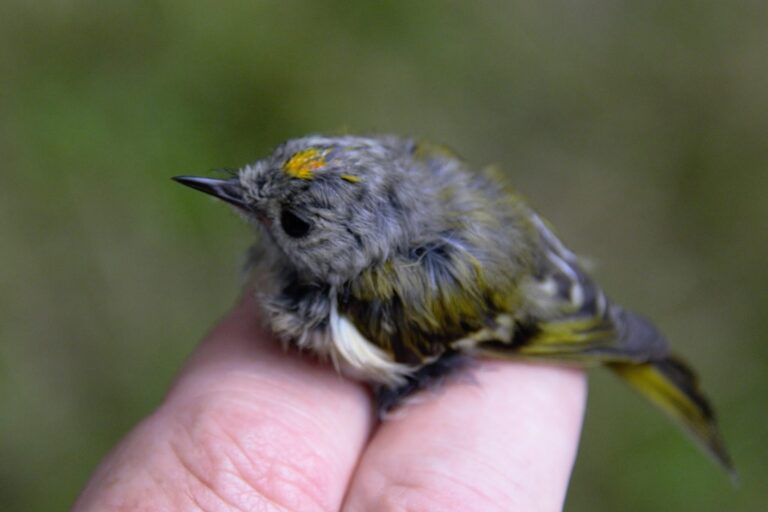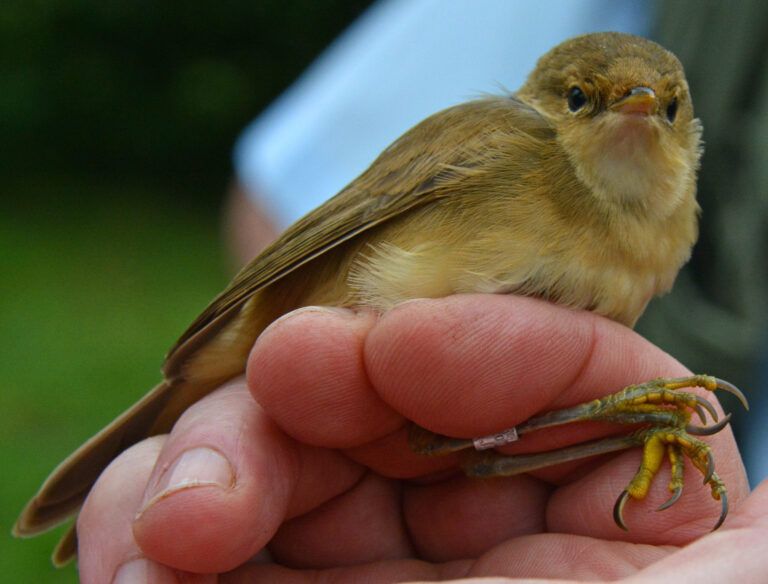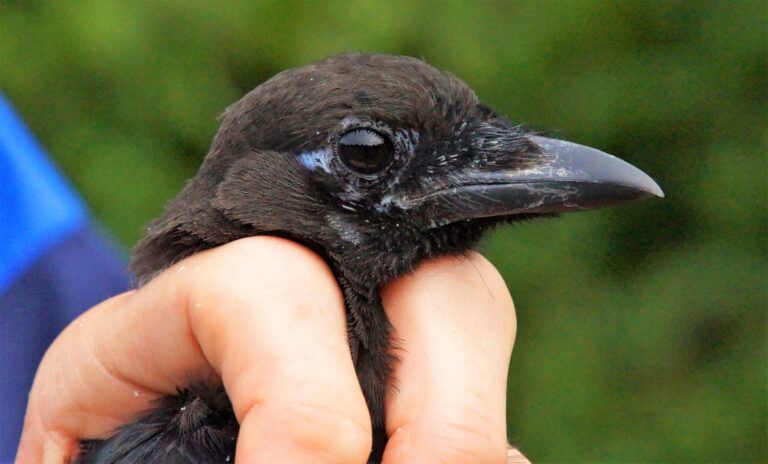The month started with some feedback from the BTO on a Sedge Warbler (9048462Paris) that we ‘controlled’ in The Gambia, Africa, back in January. This told me that it was originally ringed on the 4th September 2019 as a juvenile bird at Chenac-Saint-Seurin-d’Uzet; this is in South West France very close to the estuary of the River Gironde. When we controlled this warbler, it had already travelled 3,906 km’s to get to The Gambia. With a bit of luck, its presently back in France about to travel back to The Gambia for the second time. Further news from the BTO came in a more local piece of information. This was about female Barn Owl GV18690, controlled breeding near Howick (on the 27/5/20). We know that she has raised two young, which one of my trainees ringed on the 23/6/20 (and we also filmed for a Newcastle University video for students) but at that time we did not know that she was a young owl herself having been hatched and ringed only last year on the 17/7/19 at Wallington Hall; 38 km’s away. We are still checking on the success or otherwise of this year’s nesting owls; and searching for any second/late broods. So far, we have found three new nests, but it will be the end of September before we know if they are successful in raising their owlets in the very unpleasant weather they are currently experiencing.

Ringing in August at Howick has also been something of a battle with the weather and on the 1st Aug, we only captured 4 retraps and 16 new birds. All the new birds were obvious juveniles of the year, probably hatched locally and included Blackcap, Willow Warblers, Chiffchaffs, a Bullfinch, Nuthatch and one of this year’s relative rarities a young Swallow. The 7th was a quite different morning with 17 retraps and 59 new birds. The new birds included Goldcrest, Blackcap, Treecreeper, and no less than eleven Willow Warblers. Three of the Willow Warblers were distinctly older (although still juveniles of the year) and carrying some fat reserves suggesting they were on migration and just passing through Howick to stock up on their journey to Africa. There was also a Garden Warbler, although unlike last months this was on migration and probably not a local bird.

The 8th was another quiet day with only 10 retraps and 17 new birds. There were Bullfinch, Goldcrest, Chiffchaff, Willow Warbler and three older juvenile Blackcaps; these last three birds carrying fat reserves and migrating through the site (having stopped to feed on the fruit that the site provides). One of the Blackcaps was an adult male, with the remains of a brood patch (because male Blackcaps do take part in incubating their eggs) and there was also an adult Chiffchaff. The attached photo is an interesting comparison of two birds of a similar juvenile age; a Chiffchaff on the left and a Willow Warbler on the right (if you were squinting through a pair of binoculars at them, at the top of a tree, could you distinguish them from one another?). The 14th generated 11 retraps and only 9 new birds. However, there were interesting birds in both categories. One of the retraps was adult male Great Spotted Woodpecker LH46945; this proved to have been ringed originally as a juvenile in 2017 on the same site. Almost the last new bird captured was a new one for the site – an ‘Acrocephalus’ type warbler on migration. At this time of year some birders thoughts turn to rarities like Marsh Warbler or Blyth’s Reed Warbler but try as we might we had to conclude it was a European Reed Warbler. This was only confirmed by measuring its wing length, the notch on the second primary, checking where this feather notch fell relative to the other wing feathers; observing the strong yellow under-claws (obvious in the attached photo); observing the lack of a supercilium and the presence of a very rufous rump feathers etc. These are all characteristics ringers need to learn to check-for because a picture in a bird book will only get one so far towards a positive identification. Having excluded the possibility of a major rarity the question was still ‘what was a bird more usually found in Phragmites Reed-beds doing in the Howick Arboretum?’. Apart from the biometric features already mentioned it was also a very thin bird – clearly carrying no reserves of fat and only weighing 10 grams. A migrating Reed Warbler might be expected to weigh up to 14 g. We can only speculate but it does seem possible it had started in Scandinavia and be blown across the North Sea and made landfall to feed and built up its fat reserves again, before continuing its migration to Africa (quite possibly to The Gambia).

Ringing on the 15th yielded 19 retraps and 24 new birds; including another new bird for the site. However, some of you will not be impressed when I tell you it was a Magpie! There is something of an irrational dislike of Magpies by a large proportion of the British public; all I can say is that they do rather less damage to other birds than some other species notably perhaps jackdaws! What’s interesting about the attached photo is the beautiful blue colouration behind the eye, a notable feature of juveniles of the species. From the same morning I have attached a photo of a very young Goldcrest; probably hatched at Howick – showing that as part of its Post-juvenile moult its growing its first ‘orange’ crown feather indicating its actually a male bird.
Some dreadful weather stopped us ringing again until the 30th when we captured 86 birds (rather a busy time for my trainees). 38 were retraps including a Blue Tit from 2017. Among the 48 new birds there were several Bullfinch (a regular Howick resident species that crunches its way through berries and buds); and two migrating Garden Warblers; Blackcaps, and just one Willow Warbler. The 31st started slowly but we built up to 52 by lunch-time; 25 retraps (mostly tits) and 27 new birds. The new birds included a very welcome 3 Swallows (a bit of a rarity this year) and several migrating Blackcaps. Finally, we caught an adult Chiffchaff (with a pale chest and very blunt tail characteristic of its age – rather than the sharp thin one of the much more numerous juveniles).
We are currently limited to 6 people at a time at the Howick Ringing Station, but this has not proved a problem to date.
Best Regards
Phil Hanmer
S Ringer/Trainer; Natural History Society of Northumbria Ringing Group (Hancock Museum)
E-mail: tytoalbas@btinternet.com